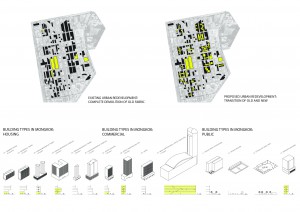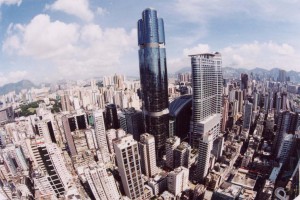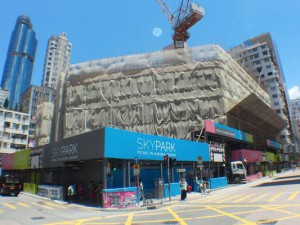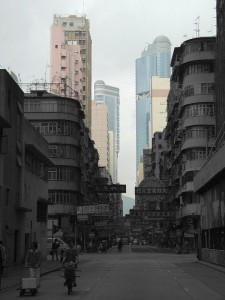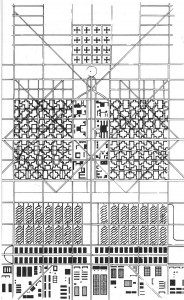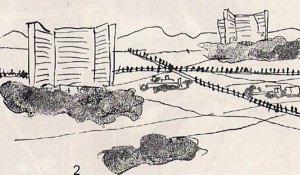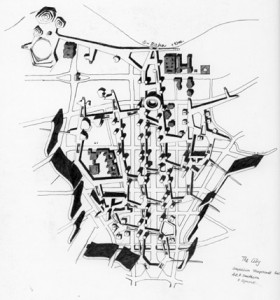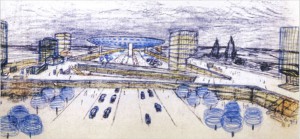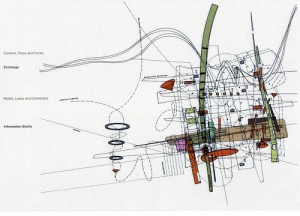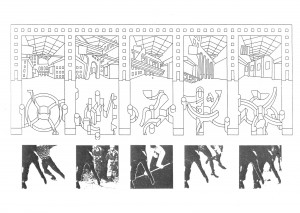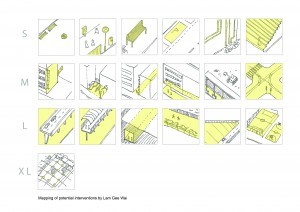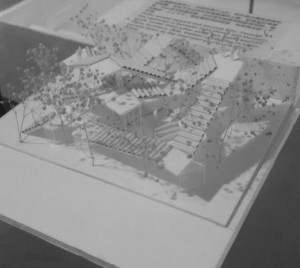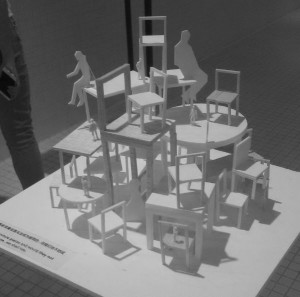In Between Strategies and Tactics
In Between Strategies and Tactics“The history of architecture and built urban artifacts is always the history of the architecture of the ruling class.” What(Left to right: Langham Place – first urban redevelopment project in Mongkok, Sky Park – redevelopment project in Fa Yuen Street under construction, Comparasion of old and new fabric in Mongkok)The site of the project will be located in places that are densely populated with diversified user groups. The project would be a medium that evaluates the effectiveness of current planning in promoting social activities through simulating and visualizing the phenomena of public behavior and their needs. Mongkok will be chosen as the test case of my thesis to explore the relationship between strategies and tactics. My thesis will look into Mongkok in different scales by first analysing the whole Mongkok area, and after that my thesis will focus on 3-4 street lots near Langham Place as the field of various design interventions. The scope of my thesis would be focusing on the urban redevelopment strategies happening in Mongkok and people’s tactics towards such strategies. Also, the role of architects between such strategies and tactics will be reexamined. Mongkok is chosen as the test case because it is the densist place in Hong Kong with highly diversified user groups. It is also a place with rich history since colonial development in Hong Kong. However, Mongkok is now one of the target areas of urban redevelopment and such strategies are usually about total demolision of the old existing fabric. The resulting new development, such as Langham place and Skypark are all typical giant podium mall/ tower which disregard local identity. This monistic reactionary approach to problems causes only more problems due to its negligence to the highly diversified user groups and their wants.This thesis will first look into Mongkok in a broader scale to identify the existing fabric and local identity of Mongkok. After that, my thesis will focus on the street lots near Langham Place, which is the first urban redevelopment project in Mongkok and study its tremendous impact to the surrounding old neighbourhood. Although urban redevelopment is inevitable, various urban interventions will be designed to provide alternative solutions to the “total demolision” approach. Why(Radient City by Le Corbusier)(Berlin Hauptstadt, competition entry 1957-1958 by Peter & Alison Smithson)(Left to right: You Are The City by Petra Kempf, Manhattan Transcripts by Bernard Tschumi)During the early 20th century, CIAM has presented provocative ideas on urban planning strategies that they suggested an ideal city should be zonned according to different functions, such as working, dwelling, recreation and transport. The above ideology is revealed in Le Corbusier’s book of the Radient City in 1935. However after 1950s, a new group of young architects were split out from CIAM called Team X. Chafing within the confines of a functionalist orthodoxy that tended to reduce human individuals to numbers on a chart, Team X proposed that architecture should ground in a sense of community identity. Team X opposed to CIAM’s dogmatic strategies to planning — its disregard for individual difference and, above all, its uncritical support for the high-rise housing blocks that were draining the life out of inner cities. In the contemporary era, some architectects have presented planning strategies in a different way than what the CIAM did. You Are They City by Petra Kempf would be a good instance that he tried to map a city according to forces, energy, nodes etc. instead of functions of a city. Manhattan Transcripts by Bernard Tschumi interpreted a city in terms of situations and events. By arguing that there would be no space without event, Tschumi urged the city should be a series of “constructed situations” rather than functional zonnings. This thesis will explore an architect’s role between the top-down planning strategies of the authority and the bottom-up tactics of the public. The aim of the thesis is to find possibilities to emancipate the restraints caused by certain planning strategies via urban interventions in different scales to promote a larger spectrum of social activities happening on street and public space. In other words, architecture should provide space for people to pursue their ideal way of living and have fun. How(Category of potential areas for urban interventions in different scales done by my own)(Concept models by Sou Fujimoto)The project will first start by mapping the existing urban fabric in Mongkok in chronological order to understand the change in development. Next, potential sites for urban interentions will be categorized according to scale. After that, models of various urban interventions will be produced in scales of 1:100, 1:50 and 1:25 to examine the spatial quality of the design. 1. First Thesis Review: Drawings of site analysis and catelogue of potential area
Bibliography Theory:
|
